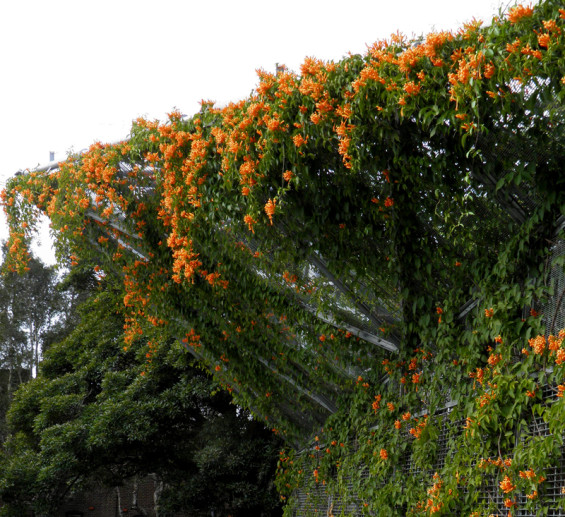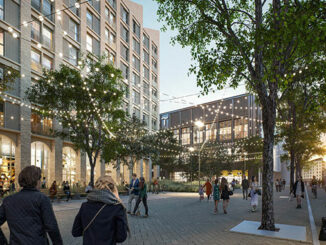The Waterloo Youth Facility now known as WEAVE (Working to Educate, Advocate and Empower) is located on a fault line between newly found affluence and a socially disadvantaged population that traditionally occupied the area of Waterloo, an inner suburb of Sydney. The original building was a converted amenities block. Resembling a graffiti covered bunker, it served the community of disadvantaged citizens for more than 15 years. In 2008, the City of Sydney decided to embark on the revitalization of the facility and organized a limited competition.
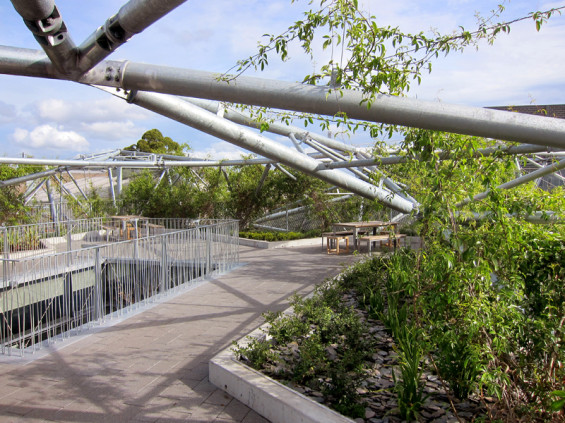
Community centres tend to be utilitarian, often demonstrably inexpensive buildings lacking character, not to speak about any recognisable iconography. The community building in Sydney inner suburb of Waterloo is quite different. Its formal language makes it difficult to place it in the usual functional categories. Whilst the architects Collins & Turner, cite Snowdown Aviary at London Zoo as the seminal influence, the twist here is quite unusual – rather than preventing the zoo inhabitants from escaping, the architecture attempts to “capture” as much air as possible and create an illusion of the abundant space available to staff and visitors. The enmeshed building mass is well protected against prevalent vandalism that is the unfortunate, but understandable by product of the society that fails to address lack of opportunities for the socially and economically disadvantaged youth.
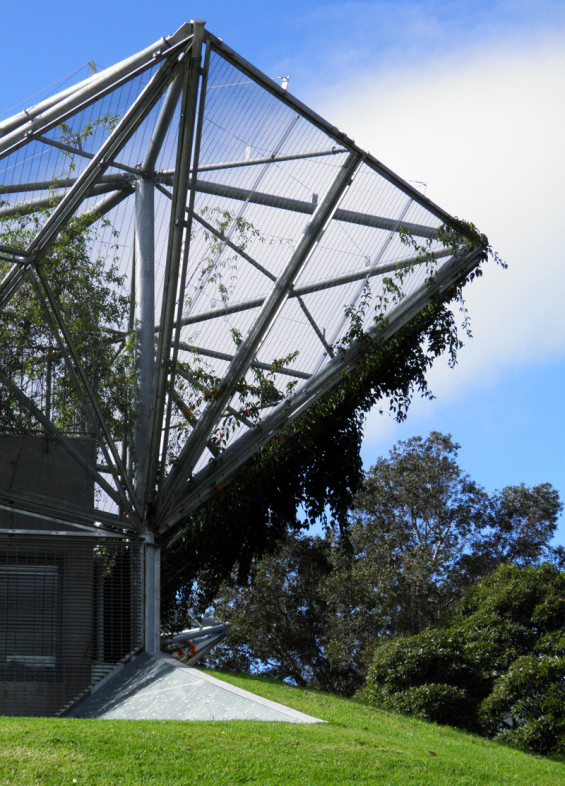
The mesh trellis is the most visually pronounced building form. It is an independent element that is structurally separated from the more solid internal mass. This consists of the original brick and newly constructed concrete walls bound together by pre tensioned ceiling slabs. Whilst it is doubtful that it would ever happen, either of these two elements could be removed or relocated.
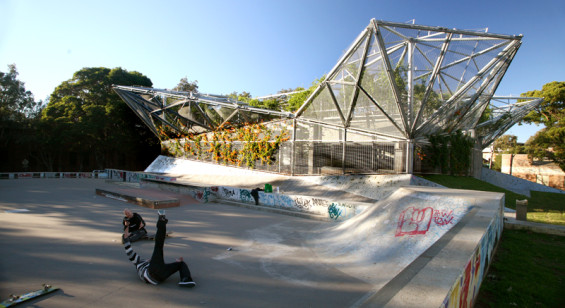
The strong and conspicuous trellis geometry will in time appear considerably more blurred, perhaps at some locations almost invisible. Rampant native and introduced climbers will take care of this. It is rather curious that the trellis utilizes South African prison mesh to support plants whilst also preventing attempts to scale the structure. The defensive character of the building virtually works to its advantage. In winter its ground floor is shrouded in orange flowers of Pyrostegia venusta. Later in spring cascades of white flowers of wonga vine (Pandorea pandorana) hang from upstairs. It is a building that transforms with seasons, a constructed superflower perhaps. The green skin does not act here as a camouflage, plants are integral to the building concept and are able to withstand a degree of neglect. This distinguishes the building from now almost ubiquitous but ecologically fragile green walls.
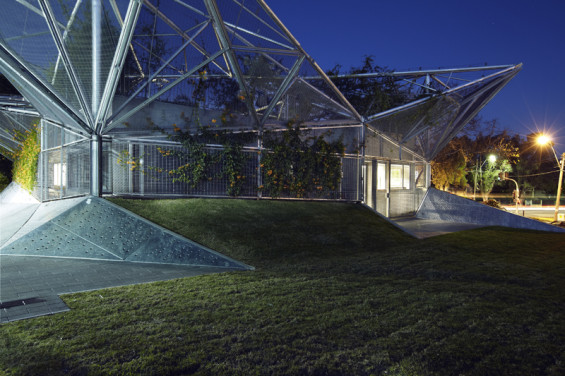
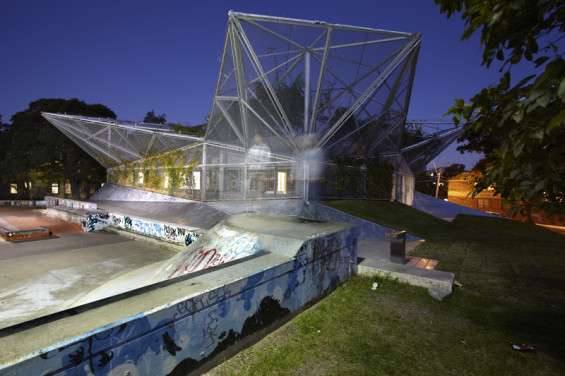
The core of the original block has been hollowed to frame a small courtyard that functions as the extension of the workspace. A single tree, crepe myrtle animates this tiny courtyard. A web of cables and climbers connects this courtyard with the roof garden. Cables around the periphery of the space support native wombat berry (Eustrephus latifolius) creepers. In time the creepers will partially veil the space, filtering views into the courtyard and making it less of a ‘vitrine’. A number of nooks on the roof act as an extension of working space as well as a pleasant space for socializing. The roof terrace also plays host to greenery, in what is a partly edible garden. Various plants, some more structural and long term, others transient herbs, fruits and vegetables, surround the paved central space. Locally grown food thus finds its way, to improve the taste of barbecues that are frequently “staged” on the roof.
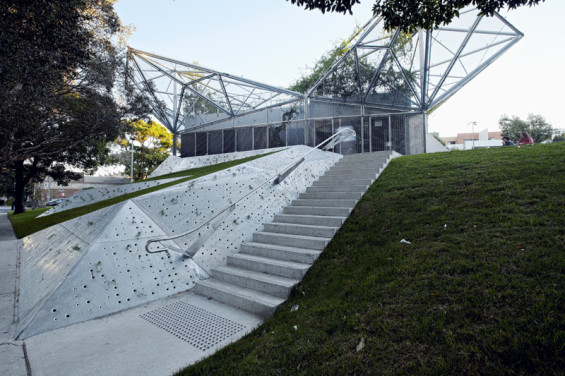
Treatment of retaining walls around the building loosely echoes fractal geometries of the building canopy, with angular steel revetments emerging out of the lawn. Steel revetments are perforated with small openings based on Braille letters, some of which are colonised by pig face succulents. The function of holes is also to reduce negative impact of summer heat on planting. These robust, almost fortification like elements are a result of the peculiar regulations that don’t allow grassed slopes to exceed one in four gradients. At the same time all walls exceeding one meter of vertical difference require a balustrade.
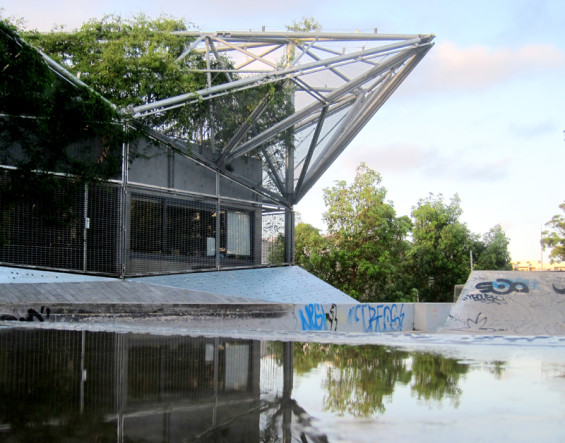
The success of the project is evident. Loved by the staff, accepted by clients, residents and skateboarders there is little evidence of vandalism. Perhaps it could be summarised by the words of one of the “rougher” characters who is frequenting the area: “Cool stuff, mate”.
Project name | Waterloo Youth Facility
Location | Waterloo, Sydney, Australia
Design firm | Terragram Landscape Architects, Collins & Turner Architects
Builder | Project Corp Australia
Landscape Subcontractors | Techscapes Australia Pty Ltd & Nick Johnston Landscapes
Client | City of Sydney Council
Year | 2008-2012
Credits | Garth McKee, Terragram (Images), Terragram (Text)

